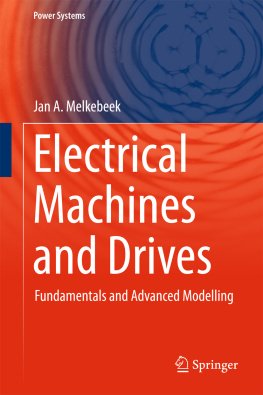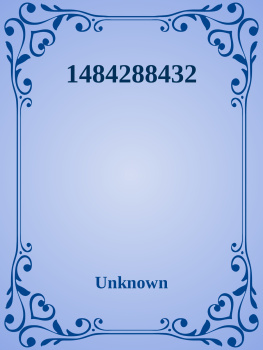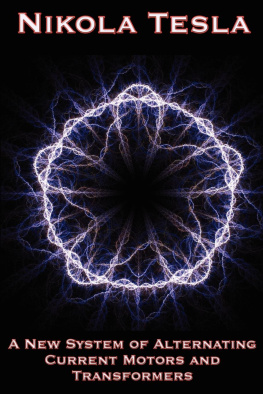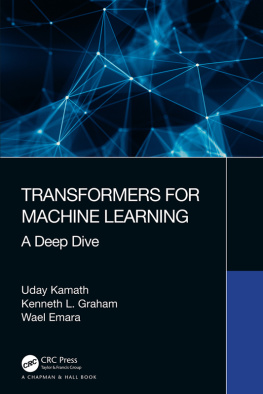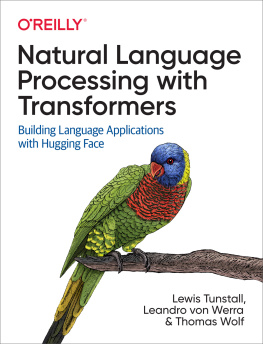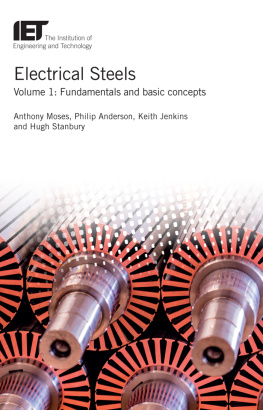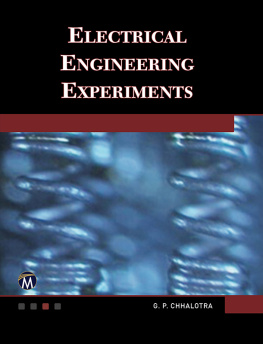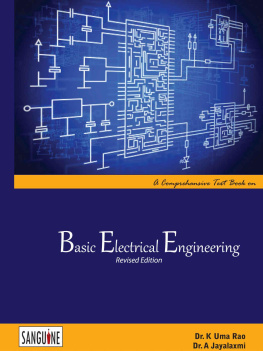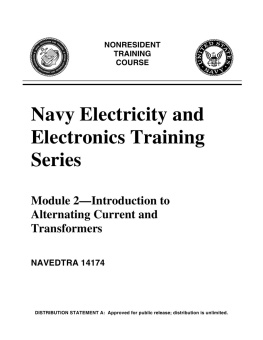Power Systems
More information about this series at http://www.springer.com/series/4622
Jan A. Melkebeek
Electrical Machines and Drives Fundamentals and Advanced Modelling
Jan A. Melkebeek
Faculty of Engineering and Architecture, Ghent University, Zwijnaarde, Ghent, Belgium
ISSN 1612-1287 e-ISSN 1860-4676
Power Systems
ISBN 978-3-319-72729-5 e-ISBN 978-3-319-72730-1
https://doi.org/10.1007/978-3-319-72730-1
Library of Congress Control Number: 2017962069
Springer International Publishing AG 2018
This work is subject to copyright. All rights are reserved by the Publisher, whether the whole or part of the material is concerned, specifically the rights of translation, reprinting, reuse of illustrations, recitation, broadcasting, reproduction on microfilms or in any other physical way, and transmission or information storage and retrieval, electronic adaptation, computer software, or by similar or dissimilar methodology now known or hereafter developed.
The use of general descriptive names, registered names, trademarks, service marks, etc. in this publication does not imply, even in the absence of a specific statement, that such names are exempt from the relevant protective laws and regulations and therefore free for general use.
The publisher, the authors and the editors are safe to assume that the advice and information in this book are believed to be true and accurate at the date of publication. Neither the publisher nor the authors or the editors give a warranty, express or implied, with respect to the material contained herein or for any errors or omissions that may have been made. The publisher remains neutral with regard to jurisdictional claims in published maps and institutional affiliations.
Printed on acid-free paper
This Springer imprint is published by Springer Nature
The registered company is Springer International Publishing AG
The registered company address is: Gewerbestrasse 11, 6330 Cham, Switzerland
To my late parents and brother
Foreword
It is remarkable to me that well over half of the subject matter in this book simply did not exist when I taught my first electric machines course in 1959. This is testimony to the expanding role of electromechanical conversion systems, fueled by demands for improved energy management and enabled by developments in power electronic devices and systems. It also speaks to the depth and breadth of the topical coverage in the book.
The organisation into four parts, Electric Machines, Power Electronics, Electric Drives and Drive Dynamics, provides substantial flexibility. Viewed as a textbook, the four parts together provide comprehensive content suitable for a multi-semester course sequence in electromechanical energy conversion. Alternatively, Part 1 can be used alone for a one-semester course in Electric Machines and portions of Parts 24 for a one-semester Electric Drives course and a more advanced course emphasising dynamics using Part 4. The book can also be viewed as a valuable reference book because of its comprehensive coverage of the subject area including many special topics such as stepping motors, switched reluctance motors, small electric motor drives and voltage surges in electrical machines.
I spent a semester in Gent as a Fulbright Lecturer and had the opportunity to collaborate with the author on the influence of magnetic saturation on electric machine dynamic behaviour. This experience left me with a deep appreciation of the author' s dedication to accurate but clear description of technical matters that has carried over to this text.
Whether as a text or a reference, the content of this book provides a comprehensive treatment of electric machines and drives spiced with a generous collection of special topics not usually included in contemporary books. It is a worthy addition to any collection of electric machines books.
Donald Novotny
Preface
This work can be used as a comprehensive study and reference textbook on the most common electrical machines and drives. In contrast with many textbooks on drives, this book goes back to the fundamentals of electrical machines and drives, following in the footsteps of the traditional textbooks written by Richter and Bdefeld & Sequenz in German.
The basic idea is to start from the pure electromagnetic principles to derive both the equivalent circuits and the steady-state equations of these electrical machines (e.g. in Part 1) as well as its dynamic equations in Part 4. In my view, only this approach leads to a full understanding of the machine, of the steady-state behaviour of a drive and its dynamics. Much attention is paid to the electromagnetic basis and to analytical modelling. Intentionally, computer simulation is not addressed, although the students are required to use computer models in the exercises and projects, for example, for the section on power electronics or that on dynamic modelling and behaviour. I have successfully used this approach for more than 30 years, and I often receive mails and requests from former students working abroad, who would like my course texts in electronic format. Indeed, few (if any) books offer a similar in-depth approach to the study of the dynamics of drives.
The textbook is used as the course text for the Bachelors and Masters programme in electrical and mechanical engineering at the Faculty of Engineering and Architecture of Ghent University. Parts 1 and 2 are taught in the basic course Fundamentals of Electric Drives in the third bachelor. Part 3 is used for the course Controlled Electrical Drives in the first master, while Part 4 is used in the specialised master on electrical energy.
Part 1 focuses mainly on the steady-state operation of rotating field machines. Nevertheless, the first two chapters are devoted to transformers and DC commutator machines: the chapter on transformers is included as an introduction to induction and synchronous machines, their electromagnetics and equivalent circuits, while that on DC commutator machines concludes with the interesting motor and generator characteristics of these machines, mainly as a reference. Chapters offer an in-depth study of induction and synchronous machines, respectively. Starting from their electromagnetics, steady-state equations and equivalent circuits are derived, from which their properties can be deduced. In addition to the polyphase machines, also special types such as capacitor motors and shaded-pole motors are discussed.
The second part of this book discusses the main power electronic supplies for electrical drives, for example, rectifiers, choppers, cycloconverters and inverters. This part is not at all intended as a fundamental course text on power electronics and its design. For the design of power electronic circuits, much more in-depth textbooks are available. The only aim is to provide the basics required for their application in electrical machine drives. After an overview of power electronic components, the following chapters provide a rather thorough analysis of rectifiers, DC and AC choppers, cycloconverters and inverters. Much attention is paid to PWM techniques for inverters and the resulting harmonic content in the output waveform.
In the third part, electrical drives are discussed, combining the traditional (rotating field and DC commutator) electrical machines treated in Part 1 and the power electronics of Part 2. Part 3 begins with a chapter on DC commutator machines and their characteristics. Next, the traditional constant frequency operation of rotating field machines is treated in detail, including its (limited) starting and variable speed operation possibilities. In the same chapter, the effect of voltage variations is also discussed, as is voltage adaptation to the load and power electronic starting of induction machines. The next chapter analyses ideal sinusoidal current supply of rotating field machines, with a special focus on main field saturation. After ideal variable frequency supply of rotating field machines is treated, the useful fundamental frequency equivalent circuits for inverters (originally presented by the colleagues of UW-Madison) are discussed. With these equivalent circuits, the main properties of rotating field machines with variable frequency inverter supply are straightforwardly derived. Next, the basics of controlled drives are presented, including field orientation of induction and synchronous machines, as well as direct torque control. The two subsequent chapters are devoted to power electronic control of small electric machines and to AC commutator machines, respectively. To end, small synchronous machines are described (i.e. permanent magnet synchronous machines, reluctance machines and hysteresis motors), as are stepping motors and switched reluctance machines.

